The emission devices vary according to their flow rate, hydraulic characteristics and wetting pattern. The ideal emission device is durable (withstands outdoor conditions), resists clogging (large internal passageways, self-flushing), is insensitive to pressure variation that occurs as a result of slope and/or lengths of run (pressure compensating), accurate (low manufacturing Coefficient of Variation, or CV), and is economically affordable. Drip irrigation emission devices are typically installed on the surface such that there is flexibility in placement and convenience for management. These attributes are achieved via advanced hydraulics, plastics, and injection molding technology.
1. Drip Tape
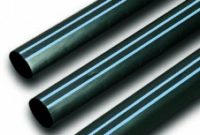
Drip Tape is a “line-source” product that incorporates a series of relatively inexpensive, engineered emission devices into a thin walled tube. Water is distributed evenly along the length of the tube through emission devices which may be spaced anywhere from 4″ to 24″ apart. To accommodate various crops and terrain, tube wall thicknesses are available from .004″ to .015″ (4 mil to 15 mil), emitter flow rates from .07 – .34 gph, and pipe diameters from 5/8″ to 1 3/8″. Drip tape is available in standard and pressure compensating models, and is used extensively for vegetable and field row crop cultivation. It may be installed above or below the ground, and may be retrieved for multi-season reuse or disposed at the end of each season. Drip tape is relatively inexpensive and is ready to install without any additional emission device installation labor.
2. Micro-sprinklers
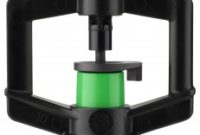
Micro-sprinklers are small plastic devices that emit water in a full circle spray/sprinkler pattern through the air via a rotating spinner. The device is attached to the PE lateral tubing via a separate plastic stake or via a combination of a plastic stake fitted with a length of PE micro-tubing. The advantage is that water is applied over a larger area using only one emission device, and the operating pressures and application rates are low. A possible drawback is that, similar to conventional sprinklers, water is delivered through the air and may be applied to non-target areas such as roads, tree trunks, foliage or other non-target areas. In addition, water applied through the air is affected by wind. It should be noted that a performance overlap exists where the higher flow rate ranges of micro-sprinkler approach the lower flow rate ranges of conventional sprinklers.
3. Jets
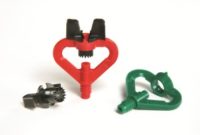
Jets are small plastic devices mounted on risers and/or stakes that jettison water through the air as separate streams which create finger shaped patterns of water in the soil. A variety of finger patterns are available including full circle, half circle , hi/low trajectory, butterfly, etc. The versatility of patterns provides a great deal of flexibility for the end user to accurately apply water only where wanted, such as around each tree in an orchard without wetting the trunk.
4. Flat Emitter Dripline
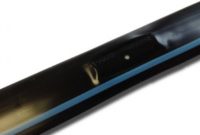
Flat Emitter Dripline is ideal for use in demanding applications where thicker walled products can provide greater durability such as subsurface drip irrigation (SDI). The exceptional durability of the materials selected for this product makes installation and retrieval easier and extends the useful life of the dripline. The discrete emitter in Thinwall Dripline resists plugging and is a good choice for applications expected to last. Thinwall Dripline can stand up to rocky and abrasive soils that require a thicker tube, and it is ideal for semi-permanent crops in which the tubing needs to withstand pruning and harvest damage.
5. In-line Emitters / Dripline
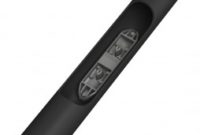
In-line Emitters, or Dripline, consists of small plastic emission devices similar in function to on-line emitters, but in this configuration they are pre-inserted into the PE tubing at specified intervals during the tubing extrusion process. The emitters may be cylindrical or flat “boat shaped”, and are attached to the inner tube wall via a controlled heating/adhesion process. Labor savings for the end user may be substantial since emitters are factory pre-installed. Flexibility is not affected since additional emission devices are easily added to the tubing in the field if desired. The drawback is that emission devices may exist where unneeded, and they are not serviceable. Unlike all other classifications of emission devices, dripline may be installed below the surface such that the soil surface may be kept dry and surface damage may be avoided.
6. On-line Emitters
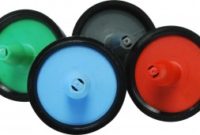
On-line Emitters are small plastic devices which convey small streams of flow from polyethylene (PE) tubing to the soil. Water then moves through the soil via capillary flow and creates a wetted circle, the size of which is dependent upon the soil type, flow rate and irrigation schedule. On-line emitters are attached to the PE tubing wall by inserting the emitter’s barb shaped base through a precisely punched hole. On line emitters offer the user the advantage of installing an emission device exactly where wanted, and if the emitter is “take-a-part”, it may also be serviced. The disadvantage is that the end user must manually insert each emitter. Although the ability to self-clean an emitter is an attractive feature, it should be viewed as an occasional event that is no substitute for proper filtration and maintenance. Drip irrigation systems may employ hundreds or even thousands of emitters, a quantity impractical to flush by hand.
7. Foggers
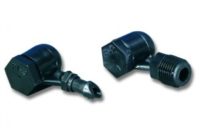
Foggers are small plastic devices that emit water as a fairly confined mist, or fog, via a small plastic online device. In addition to irrigation water being applied to the soil, temperature may be manipulated and/or a humid environment may be created. Foggers were originally developed for the citrus industry, but work well for potted plants or hanging baskets as well where confined roots require frequent wetting.
